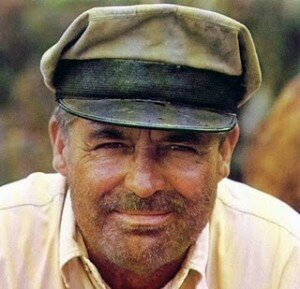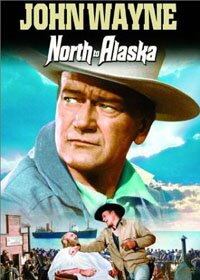It’s hard to think of John Wayne and romance at the same time. The image of one and the image of the other don’t rest well side by side; one seems to negate the other.
Familiarity: a characteristic of the comfort movie?
A friend of mine went to visit some friends in Edmonton a few months ago. When she returned, I asked her what she had done. “Nothing,” she said.
“Did you go anywhere?”
“Nope.”
“Did you at least go to that restaurant I told you about?”
“No; there wasn’t time.”
She had been there for over a week. Yet all she had done was spend time with her friends.
That’s what some comfort movies are.
Many years ago when the marathon-like M*A*S*H was finally ending its time on television, someone made the observation that few people had watched it because they were eager to see the next episode. They weren’t wondering what would happen next. They were watching simply because they wanted to spend time with the characters they had come to know so well.
That is what some comfort movies do. Many of the John Wayne movies are like this. They may have drama or comedy but many people watch them simply to spend time with their idea of John Wayne and the characters associated with him.
This particularly comes across in his later movies, like Hatari! or Donovan’s Reef, or even an earlier movie like The Quiet Man. Their merits as films aside, people watch to see the Duke and the actors/characters associated with him, like Maureen O’Hara. There is a sense of knowing them, of a personal relationship, though we know that couldn’t possibly be true – we’ve never even met them! Yet we feel that way.
 So it strikes me that a characteristic of comfort movies is familiarity. We revisit certain movies in the same way we revisit certain friends and family. Familiarity. We enjoy spending time with them. This is why they are comfort movies.
So it strikes me that a characteristic of comfort movies is familiarity. We revisit certain movies in the same way we revisit certain friends and family. Familiarity. We enjoy spending time with them. This is why they are comfort movies.
Although it’s not the movie I’d like to start off with (it’s a bit misleading as far as what I consider a comfort movie to be), my favourite movie as far as this category goes is Father Goose.
Gasp! Am I nuts? Possibly. But for me this movie is as comfortable as old slippers. And that may be a good analogy because this movie is probably just as fashionable. Besides, it stars the always familiar Cary Grant, whom many simply like to watch. In anything.
- Review: Father Goose 1964
John Wayne heads north – booze and brawls ensue
 Directed by Henry Hathaway
Directed by Henry Hathaway
This movie, North to Alaska, is a difficult one to account for. I really like it a lot. But I can’t think of a single cinematic merit it has going for it. Essentially, if you don’t like John Wayne’s later movies, especially the comic ones, you won’t likely take to this film. In fact, you may take a strong dislike to it because it’s corny and wildly sentimental. But if you do like John Wayne …
From something I read somewhere on the Web (does it get more definitive or authoritative?), North to Alaska was one of the first, if not the first movie of John Wayne’s later career, the older Duke, as far as his comic films go. Later, there would be films like, Hatari!, Donovan’s Reef (his last with John Ford) and McLintock!.
In this movie, Wayne is teamed with Stuart Granger. They’re Sam (Wayne) and George (Granger), two guys who strike gold in Alaska. Both are elated, George so much so he sends Sam to Seattle to bring back his fiancé, Jennie. Unfortunately, in Seattle Sam discovers she’s already married. She wasn’t nearly as serious about the engagement as George was. Sam, determined not to see his friend disappointed, brings back a saloon dancer instead, Capucine (Michelle Bonet).
There are, of course, complications. For instance, Sam and Capucine fall in love, complicating Sam’s determination to take care of his friend. And there’s Frankie Canon (Ernie Kovacs), a scoundrel looking for ways of cheating Sam and George out of their claim.
In the middle of all this there is a good deal of brawling between the boys of the Alaskan town (including Sam and George), as well as romantic gamesmanship between Sam and Capucine.
In the end, it’s romantic fantasy – an Alaska that didn’t exist (except in the most broadly interpreted sense) and a feisty and unlikely romance. But realism wasn’t what they were going for. It’s intended as escapist entertainment. So you never see the reality of brawling like that or of drinking that way.
On that basis, it’s a fairly engaging film and pretty well succeeds at what it aims to do. It may come across as somewhat anachronistic to anyone who didn’t grow up with John Wayne movies. The sensibility is definitely not contemporary.
If this was the first of the later John Wayne comic films, it’s easy to see the template established: a bit of “battle of the sexes” romance, a lot of phony-baloney brawling and a good deal of drinking that appears to have only brief ill-effects, and only if the plot calls for it.
It’s fantasy but it’s fun. Movies like this are really about giving the audience the John Wayne they expect, in situations that underline the image, and doing it in a light-hearted way. In a way, it’s a bit like teasing a beloved friend or relative.
Yes, I think that’s what I’d say these movies are: light-hearted teasing of the John Wayne image that underscores just how beloved he was.
2½ stars out of 4.


